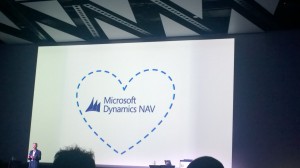For Microsoft Dynamics ERP users on a current maintenance plan, there is the rarely mentioned option to transition across the products. This means if you are using Microsoft Dynamics GP you could credit the value of your GP licence against a NAV licence.
Of course you could move the other way, from NAV to GP; from GP to AX; from AX to SL etc. The most common move we see in the UK is GP to NAV. This is not surprising as GP in the UK tends to be more of an accounting implementation so when customers look to extend the system throughout the organisation they often find that NAV offers more as standard.
The move that is starting to gain interest is the AX to NAV move, it’s a brave one. We are being approached by AX users and SAP R3 (a rash of the latter as a version retirement looms).
We love NAV, always have, probably always will and so you may accuse us of bias. We love NAV for good reason and we’re not alone; the figures do not lie, NAV is the most popular of the Dynamics solutions by a long way.

Microsoft loves NAV (see picture, that’s Paul White, General Manager of Microsoft EMEA). Microsoft loves NAV because it fits their strategy for Future Workforce (not forgetting that NAV brings revenue and happy customers!).
The message for NAV is all about “in” and “on” (in O365, on Windows Azure): light, flexible, accessible solutions. NAV has been stealthily growing at odds with some of the positioning messages for years. Three tier architecture launched in version 6 meant that NAV could scale up and as all the Dynamics ERP solutions operate on the SQL database there is no significant difference from the back end. Add to that web services, web and tablet clients, multi-tenancy, greater integration with Word, Excel and Outlook, improved UI/UX and it is easy to see why NAV is so popular.
AX in comparison represents a 1990s approach of heavy weight systems. It includes a complex set of functionality that takes a lot of work to set up and support. Microsoft advises that customers have at least one internal SharePoint resource within their IT department. There is also the consideration of upgrade (although new versions seem to be a scarcity . . . AX 2012 R3 is set to retire in three years with still no release date for its successor); systems that are hard work to put in will also be hard work to upgrade.
The big consideration is, is it worth it? Consider the long term costs of ownership versus the return on investment and benefit to the business. We have NAV clients who have been using the software for well over a decade. The larger clients have flexed and reconfigured the solution over the years to ensure NAV keeps pace with the business. They also periodically review as to whether it is the best solution for the business (assisted by external consultants with no bias).
There will always be some organisations that need a heavy weight system but for most, flexibility and accessibility are key. And increasingly, decreasing the overhead costs involved by making use of Cloud services. This is what gives Dynamics NAV users competitive edge and is why larger companies are “down-sizing” IT platform to meet the needs of shareholders looking for better return, business strategists looking for adaptable solutions and users looking for better experience.
AX users facing the cost of an upgrade should review the option to transition to Dynamics NAV. Contact us to find out if:
a) it’s cheaper to implement NAV than upgrade AX
b) 5-10 year TCO is less for NAV
c) ROI is greater with NAV

